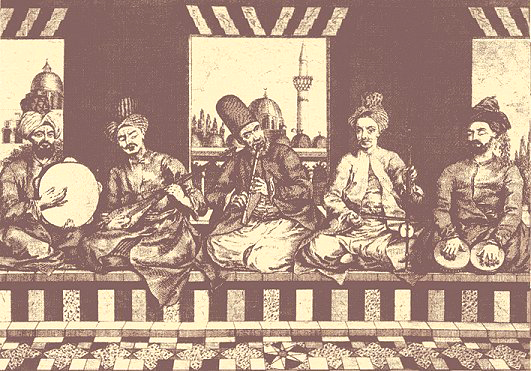|
Organizing time in the The ethnomusicology literature on musical time is relatively thin compared to studies of melody and mode. Studies of the Turkish taksim (instrumental improvisation) even rarer. If we can raise questions of general terminology and approach to musical time and apply it to the Turkish taksim, we can contribute to both discussions. Lacking an agreed-upon terminology to describe musical time in the taksim, we can begin by redefining rhythmic terms in the Mevlevi âyin (composed Sufi ceremonial music). Where the taksim has no steady beat, no usul, and no text, the âyin has all of these rhythmic layers and more, and the âyin has a familiar terminology of rhythm to build on. To the extent that we broaden our concept of musical time to include previously overlooked rhythmic events, and to include "extramusical" events integral to the performance, we can more fully describe the process of composing, performing, and listening to music. "Rhythmic" here means all configurations of the musical timeline from the micro- to the macro-level. "Turkish art music" here refers to Ottoman court music and its close relative, the Mevlevi âyin. "Rhythmic layers" here identify simultaneous or overlapping types of rhythmic activity in performance of the same composition or improvisation. Mevlevi ayin | Taksim | Summary (c) Karl Signell, 2007. Quotation by permission only. |
